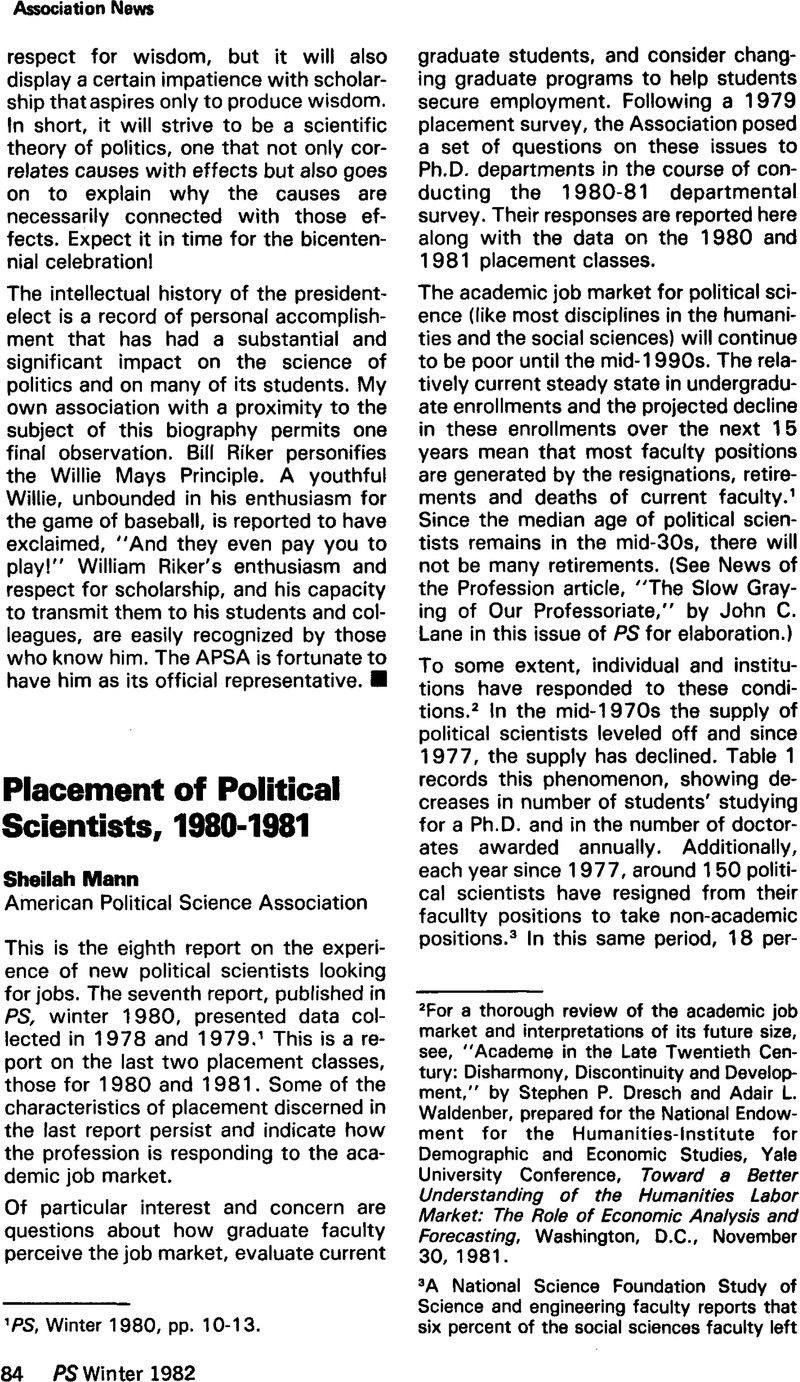Article contents
Placement of Political Scientists, 1980-1981
Published online by Cambridge University Press: 25 November 2022
Abstract

- Type
- News
- Information
- Copyright
- Copyright © The American Political Science Association 1982
References
1 PS, Winter 1980, pp. 10-13.
2 For a thorough review of the academic job market and interpretations of its future size, see, “Academe in the Late Twentieth Century: Disharmony, Discontinuity and Development,” by Stephen P. Dresch and Adair L. Waldenber, prepared for the National Endowment for the Humanities-Institute for Demographic and Economic Studies, Yale University Conference, Toward a Better Understanding of the Humanities Labor Market: The Role of Economic Analysis and Forecasting, Washington, D.C., November 30, 1981.
3 A National Science Foundation Study of Science and engineering faculty reports that six percent of the social sciences faculty left academic positions in 1978-79 and that 13 percent of these faculty took a non-academic position. The percentage of social science faculty leaving academe is lower than that for engineering faculty (28%), physical science faculty (23%), and even psychology faculty (21 %). Three times as many social scientists (39%) who have one academic position do so to take another academic position. A report on the study appeared in, The Chronicles of Higher Education, December 2, 1981, p. 3.
4 Bowen, William G.,, “Graduate Education in the Arts and Sciences: Prospects for the Future,” Change, July/August, 1981, p. 40 Google Scholar. The entire essay, on pages 40-44 features projections of the supply of earned doctorates, junior faculty positions and demand for faculty for the rest of the century. The projections indicate an increase in the demand for faculty after 1995.
5 The Ph.D. departments report using several indicators to determine the qualifications of applicants. Eighty-three percent of the departments use grade point average, the GRE, and letters of recommendation. Thirty eight percent of these departments require additional information about the students skills and experiences.
- 4
- Cited by


